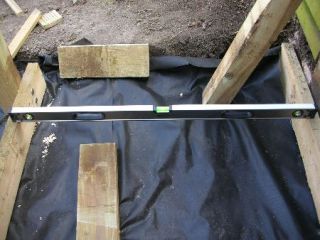Decks are mainly all built of the same structure, which is a frame that is constructed from 150mm * 50mm treated timbers. Whether your deck is at ground level or elevated or attached to a property they are all built in the same way. Really large decks can be strengthened by installing more noggins in order to give the structure strength, or you could space the joists closer together, such as 300mm centre's instead of 400mm centre's.
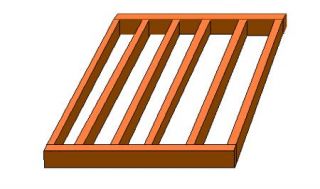
Decks are mainly all built of the same structure, which is a frame that is constructed from 150mm * 50mm treated timbers. Whether your deck is at ground level or elevated or attached to a property they are all built in the same way. Really large decks can be strengthened by installing more noggins in order to give the structure strength, or you could space the joists closer together, such as 300mm centre's instead of 400mm centre's.
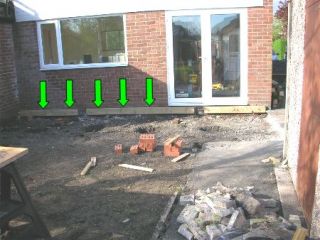
Here is the ledger or wall plate that has been fastened to the back of the property, how to fix a ledger is covered here. Once the ledger is installed you can mark out where the joists will be fixed.
We are fixing these joists at 400mm centre's, the arrows indicate where some of the joists will be positioned.
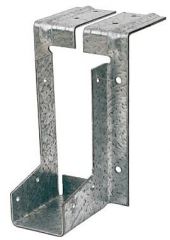
To fix the joists you can use joist hangers like this one, but be aware that the top of the hanger may need removing.
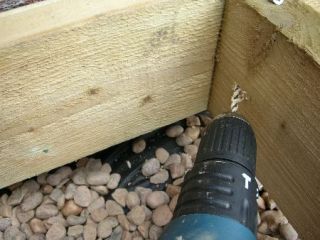
The joists can be fixed by skew screwing. Here we are drilling pilot holes for the screws.
One hole is drilled in one side and two holes are drilled on the other side of the joist. External wood glue is also used between the joints.
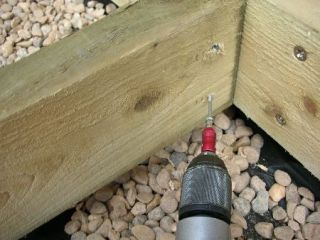
The screws are then driven into the ledger or end joist, depending on what type of deck you are constructing.
The screws should be rustproof and here we are using screws that are 4 inches long.
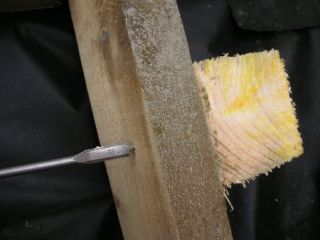
We are using M12 bolts and so a 12mm hole needs drilling through the joist and the post. Drill bits are available that will drill through both pieces of timber at once and will save much time.
A normal length bit will do but it is much harder. A mains powered drill is best for drilling these holes as it will soon flatten even the best of cordless drill batteries.
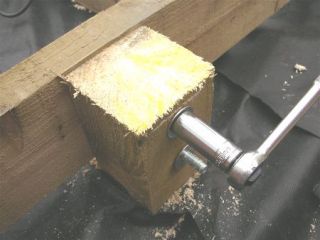
M12 bolts have been used that are 180mm in length, these are rustproof bolts.
Use a large penny washer and then a nylock locking nut to secure the bolt.
Nylock nuts should never work loose, but are a little harder to tighten by hand.
Tighten the nuts securely using a ratchet.
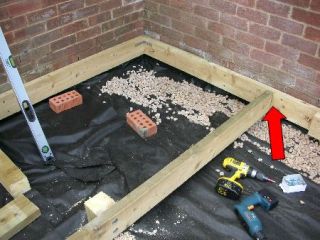
Here you can see that this joist has been fastened to the deck post and that it has been skew screwed and glued to the ledger.
To give this joint even more strength you can fasten a piece of timber such as 75mm * 50mm into the corner and screw through the joist and the ledger with some 100mm long screws.
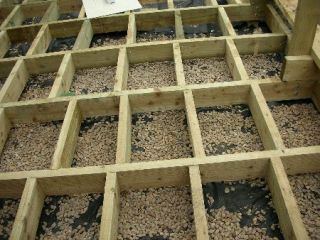
The short pieces of wood that are joining the joists together are called noggins.
If you are installing noggins (on a small basic deck you will not need them)then you do not need to put them all in a straight line you can offset them so that you can drill straight through the joists and into the ends of the noggins.
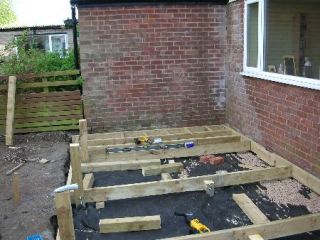
This is the deck with some of the joists installed. You can see at the far end that the joists are spaced out at 400mm centre's and I have installed noggins at 400mm centre's also, this is because of the size of the deck. Most decks will not require the noggins, although it is advisable to always add a couple.
I would rather over engineer something then have it fall down a week later!



